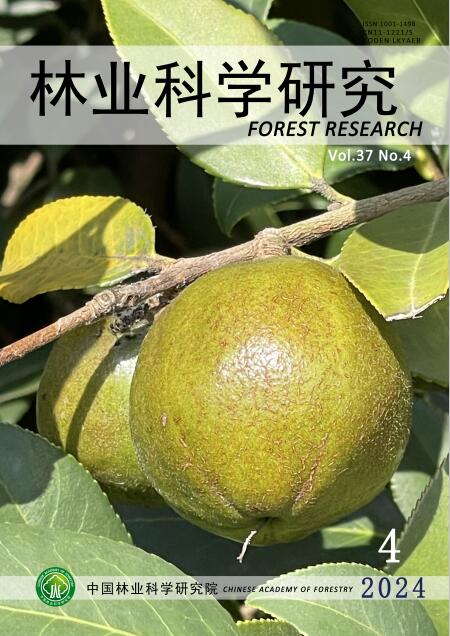野火后半个世纪内华达山脉森林植物群落的恢复状况
Q4 Agricultural and Biological Sciences
引用次数: 0
摘要
内华达山脉东部的杰弗里松树林在大约半个世纪前被一场野火部分摧毁,对其燃烧和未燃烧的部分进行比较,作为一项调查的基础,旨在深入了解这种和类似森林覆盖类型在此类事件中独立恢复的方向和速度。不论处理方式如何,针叶松都是优势树种,在两种林分中针叶松都是林分的次生成分,而在未烧毁的林分中则没有少量的白杉。在林龄、树形、基底面积、生物量等方面,未烧伐林分的林分明显大于烧伐林分的林分。树木幼苗和树苗在被烧毁的土地上要丰富得多,杰弗里松的幼苗和树苗在很大程度上解释了这种差异。燃烧林分林下灌木以雪刷蓝草为主,未燃烧林分林下灌木以匍匐蓝草为主,草本植物中雪刷蓝草数量较少,而未燃烧林分林下无桑德伯格蓝草。燃烧后基质上的细燃料和总燃料负荷随着燃料床深度的增加大大超过未燃烧基质上的细燃料和总燃料负荷,从比例上看,未燃烧基质上的细燃料比未燃烧基质上的粗燃料少,而粗燃料多。本文章由计算机程序翻译,如有差异,请以英文原文为准。
Recovery Status of a Sierra Nevada Forest Plant Community One-Half Century after Wildfire
Comparison of the burned and unburned portions of a Jeffrey pine stand in the eastern Sierra Nevada that was partially destroyed by a wildfire approximately a half century earlier served as the basis of an investigation intended to provide insight into the direction and pace of unaided recovery from such events in this and similar forest cover types. With Jeffrey pine the predominant species regardless of treatment, lodgepole pine was a secondary component of the overstory in both stand portions but a minor representation of white fir in the unburned portion was absent from the burned acreage. Commensurate with the large difference in age, tree dimensions, basal area, and biomass in the overstory of the burned stand portion were greatly exceeded by those of the overstory in the unburned portion. Tree seedlings and saplings were much more abundant in the burned acreage, with those of Jeffrey pine largely accounting for the disparity. Predominant among shrubs in the understory of the burned stand portion was snowbrush ceanothus with that in the unburned portion consisting of prostrate ceanothus, while among herbaceous species a small quantity of Sandberg bluegrass in the former contrasted against none in the latter. Fine and total fuel loading along with fuel bed depth on the burned substrate were greatly exceeded by those on the unburned substrate, while proportionally, less fine fuels but more of the coarsest ones were found on the former compared to the latter.
求助全文
通过发布文献求助,成功后即可免费获取论文全文。
去求助
来源期刊

林业科学研究
Environmental Science-Ecology
CiteScore
0.90
自引率
0.00%
发文量
4834
期刊介绍:
Forestry Research is a comprehensive academic journal of forestry science organized by the Chinese Academy of Forestry. The main task is to reflect the latest research results, academic papers and research reports, scientific and technological developments and information on forestry science mainly organized by the Chinese Academy of Forestry, to promote academic exchanges at home and abroad, to carry out academic discussions, to flourish forestry science, and to better serve China's forestry construction.
The main contents are: forest seeds, seedling afforestation, forest plants, forest genetic breeding, tree physiology and biochemistry, forest insects, resource insects, forest pathology, forest microorganisms, forest birds and animals, forest soil, forest ecology, forest management, forest manager, forestry remote sensing, forestry biotechnology and other new technologies, new methods, and to increase the development strategy of forestry, the trend of development of disciplines, technology policies and strategies, etc., and to increase the forestry development strategy, the trend of development of disciplines, technology policies and strategies. It is suitable for scientists and technicians of forestry and related disciplines, teachers and students of colleges and universities, leaders and managers, and grassroots forestry workers.
 求助内容:
求助内容: 应助结果提醒方式:
应助结果提醒方式:


